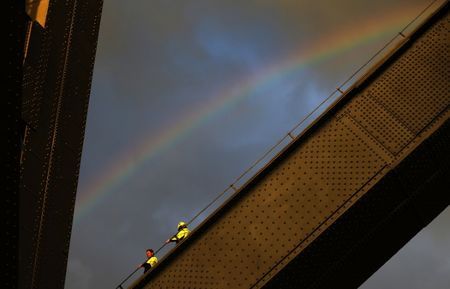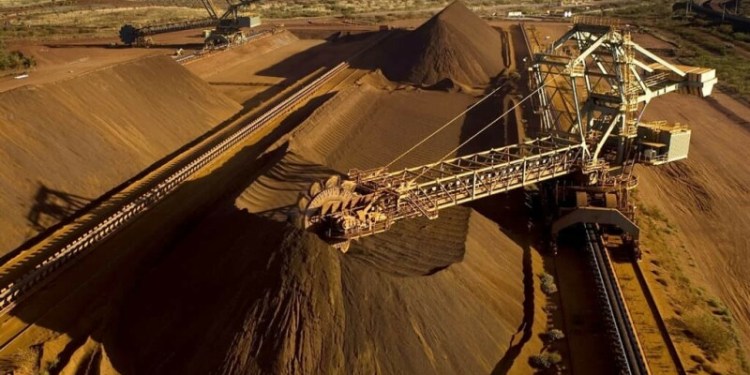
By Wayne Cole
SYDNEY (Reuters) – Australia’s economy is forecast to slowly gather speed this year and next, according to a Reuters poll of analysts, an outcome that would see the resource-rich nation pip the Dutch for the longest expansion in modern history.
Analysts estimated Australia’s A$ 1.7 trillion (£997.28 billion) of annual gross domestic product (GDP) would grow 2.6 percent this year and 2.8 percent next year, unchanged from forecasts in the previous poll in January.
That would be up from 2.4 percent in 2016 and extend the country’s current run of 101 quarters without a recession, already just a whisker from the Netherlands’ record of 103.
The race had looked in doubt when the economy unexpectedly contracted in the September quarter of last year, but activity bounced back strongly as export earnings surged and consumers and government spent more.
Lofty prices for major commodity exports delivered a big boost to national income and nominal growth. While iron ore prices have swung lower recently on concerns about Chinese demand, shipments of liquefied natural gas are expanding massively as new projects come on stream.
Growth will take a temporary knock from Cyclone Debbie, which barrelled into northern Queensland late in March and caused widespread flooding in the coal-heavy region, disrupting rail haulage for several weeks.
Analysts estimate the damage might take 0.3 percentage points off GDP growth this year and add a little to inflation, though rebuilding would offset some of that over time.
Also helping will be a levelling off in mining investment after several years of steep falls. Business investment alone took around 1 percentage point from GDP in 2016, so if it merely stabilises that would remove a major hurdle to growth.
This was one reason the IMF this week raised its forecast for Australian growth to 3.1 percent for 2017, from 2.7 percent.
“Modest growth as far as the eye can see,” was the prognosis of Riki Polygenis, head of Australia economics at NAB, who saw GDP rising 2.8 percent next year and 2.6 percent for 2019.
One risk was the lacklustre performance of the labour market which is keeping wage growth at record lows and sapping consumer spending power.
The danger is all the greater as household debt is at all-time highs and red-hot housing markets in Sydney and Melbourne are vulnerable to a major price correction.
The heat in housing has made the Reserve Bank of Australia (RBA) very reluctant to cut interest rates any further, though neither is there much pressure to tighten given inflation is still too low for comfort.
Having spent the past two years under the RBA’s target band of 2 to 3 percent, analysts predict inflation will pick up only slowly to 2.1 percent this year and 2.2 percent in 2018.
(Polling by Khushboo Mittal and Shaloo Shrivastava in Bangalore; Editing by Sam Holmes)



























